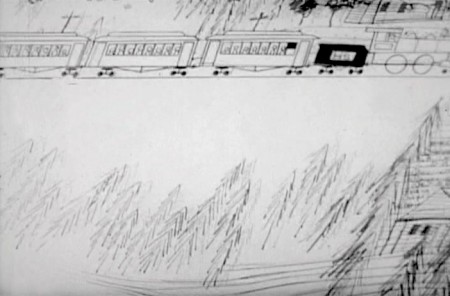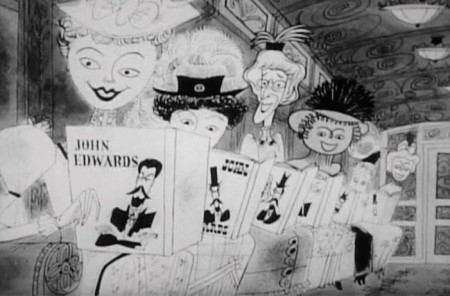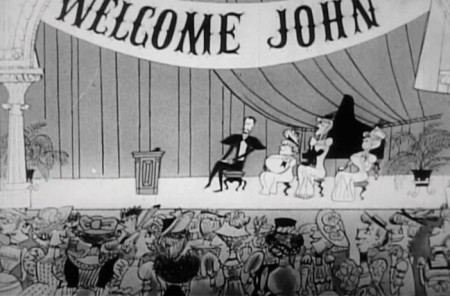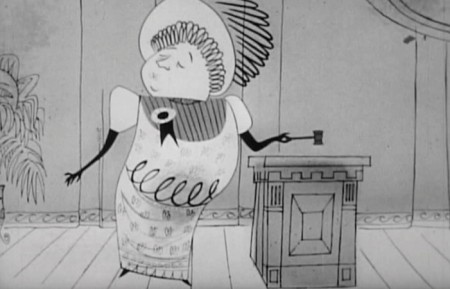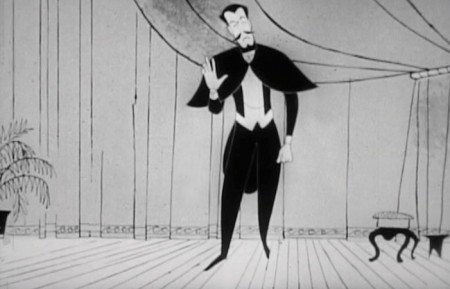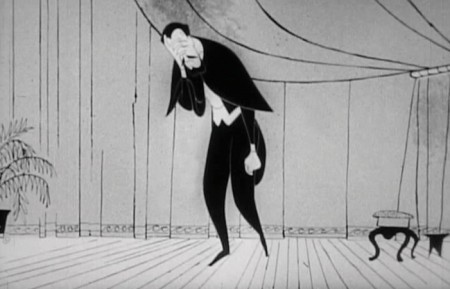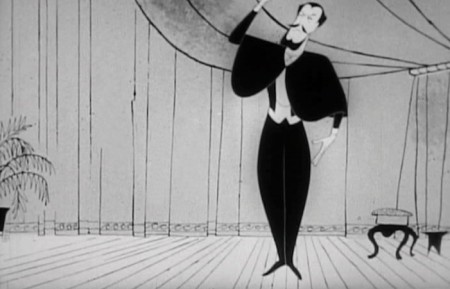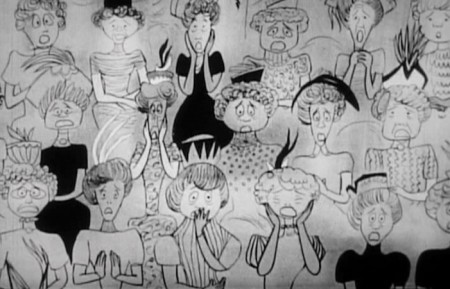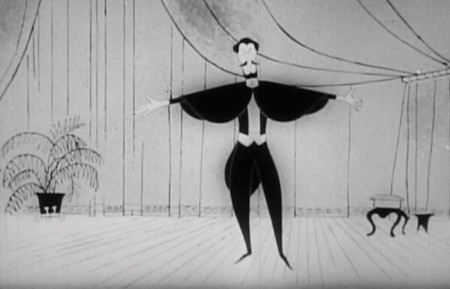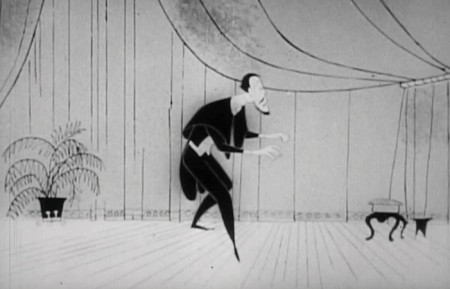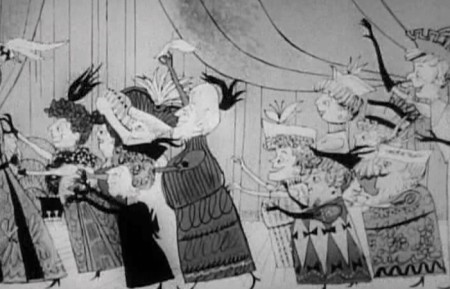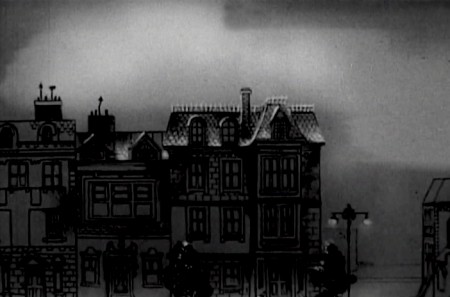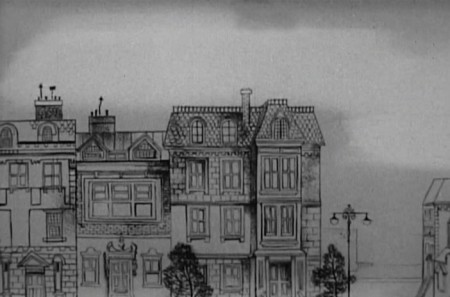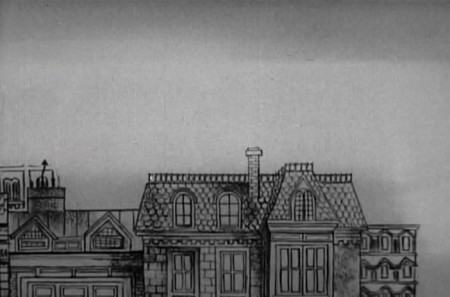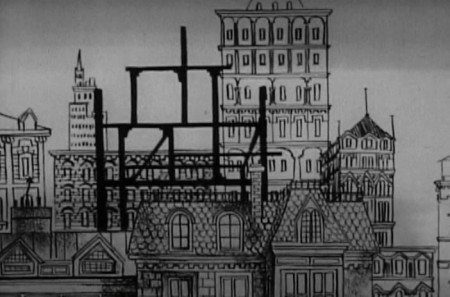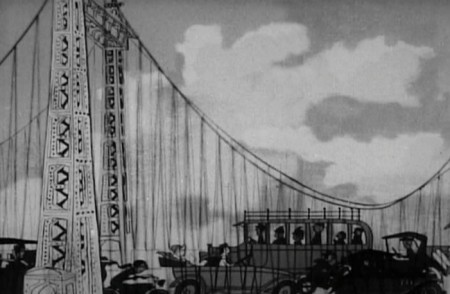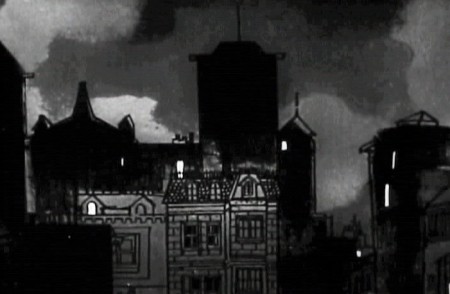Frame Grabs &Hubley &UPA 04 Jun 2012 06:54 am
The Four Poster – part 2
I’ve recently purchased what, I think, is a much better copy of this film. When it arrives, I’ll replace this and the last post with better images and continue on from there. In the meantime, I’ve done this post.
- Last week we bit into the UPA animated sequences from The Four Poster. These were directed by John Hubley, with Paul Julian credited as designer and Art Babbitt and Lew Keller credited as animators. Of course, more people were involved in that they broke the film up into segments with different teams doing individual segments.
The animation, naturally is in B&W (to match the live action film they were designed to interecede.) The boring live action film is an unimaginative adaptation of the Broadway play by Jan de Hartog. It became a travelling show that was often performed by husband and wife teams. In fact this film stars a husband and wife: Rex Harrison and Lilli Palmer. It was produced by Stanley Kramer and directed by Irving Reis. Kramer, who was very political in his film making (High Noon, Guess Who’s Coming to Dinner, Judgement at Nuremberg) no doubt stayed away from the set rather than deal with the volatile actors on the set. He had an easier time of it hiring the animation studio; he just stayed on the Columbia lot.
The film never strays from the bedroom of this couple, and we get the life story of the couple from the vantage point of the bedroom, which features the titular fourposter bed. Quite claustrophobic. They expand on it using the animation, and one almost wishes they had done the entire film in animation. It was later adapted into a musical called, I DO, I DO, and starred Robert Preston and Mary Martin on Broadway. It was written by Tom Jones and Harvey Schmidt (who also wrote THE FANTASTICKS.) That’s a much better show; the songs make it tolerable.
Here are frame grabs from the next two sequences: 3 & 4.
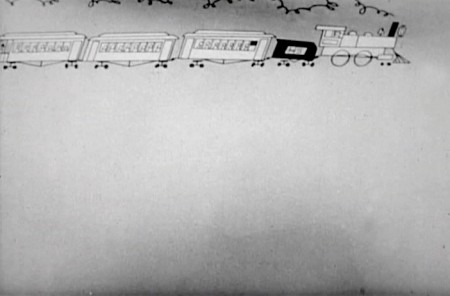 1
1A train enters and the camera moves in on it.

A pan (right to left) shows a lot of women reading
books by our lead character John Edwards (Rex Harrison).
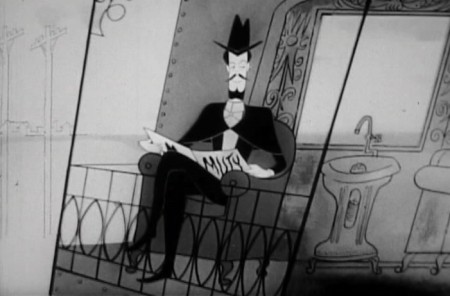 4
4
The pan ends on Edwards seeing
the full car of women staring at him.
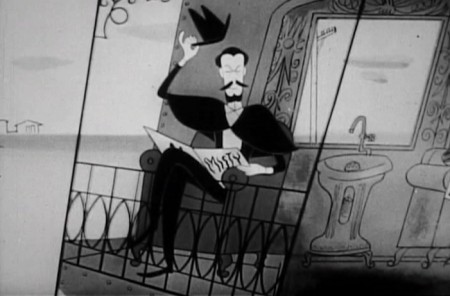 6
6
He acknowledges them as . . .
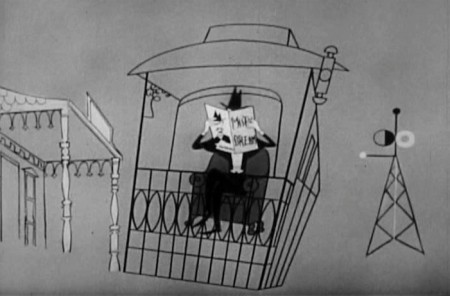 7a
7a
. . . the train moves on, and . . .
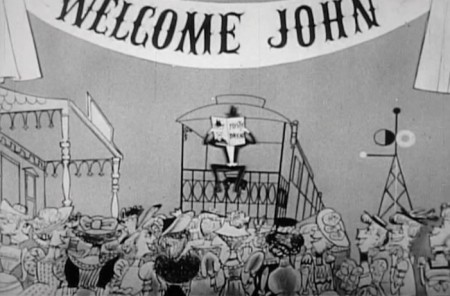 7b
7b
. . .there’s a slow transition . . .
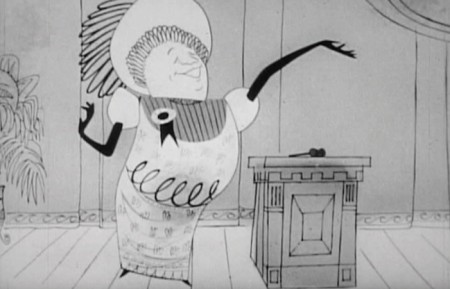 10
10
A woman speaker introduces him.
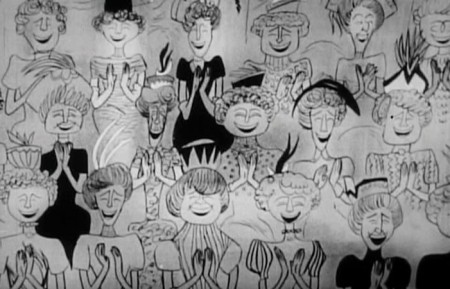 11
11
The female audience applauds enthusiastically.
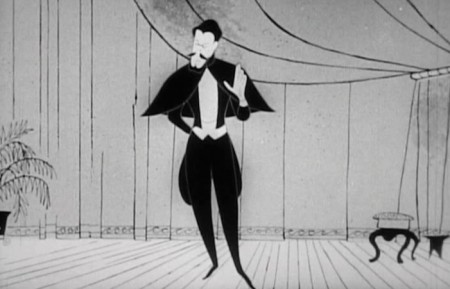 12
12
He stands to speak and . . .
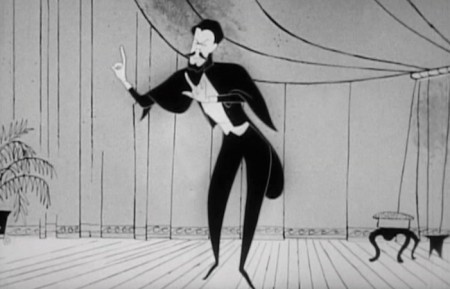 13
13
. . . gives his speech in mime. We don’t hear his words.
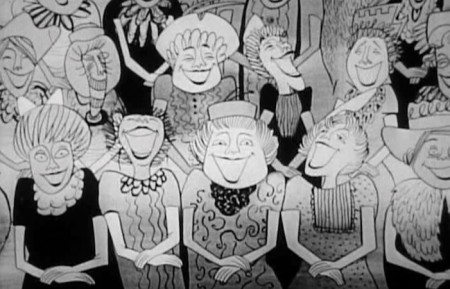 14
14
The woman laugh enthusiastically at his joke.
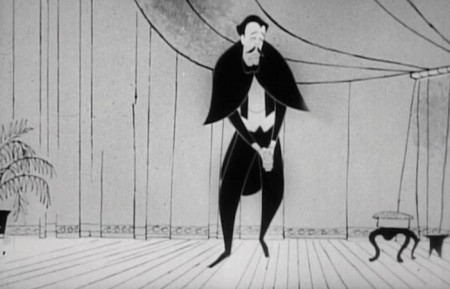 16
16
I can only wonder whether this had any influence
on Hubley’s later film, Zuckerkandl.
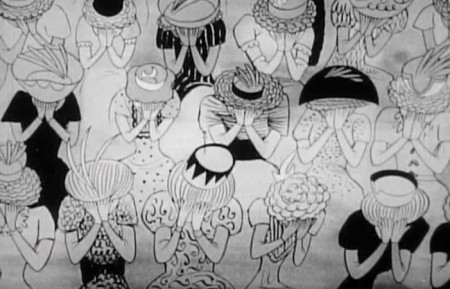 18
18
The women are in hands. They’re crying.
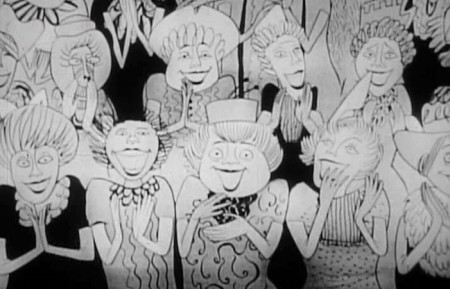 22
22
They audience is overwhelmed.
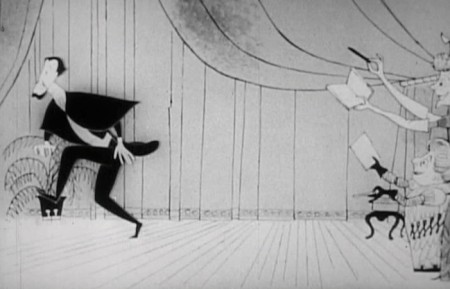 24
24
He’s chased from the stage.
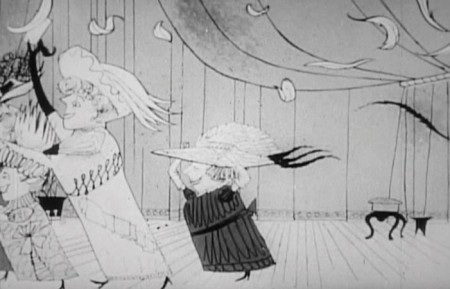 26
26
They rush him leaving feathers flying from their hats.
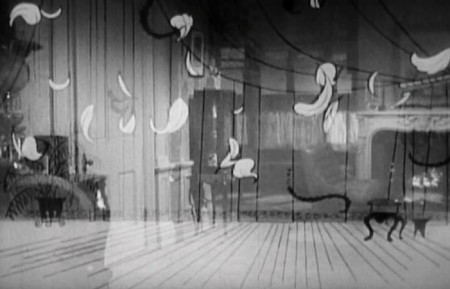 27
27
There’s a transition back to the live action bedroom.
.
__________________________
The fourth section is designed only to show us that time has passed and the city is growing up around their ears. They remain in the same house the went to after first getting married (obviously, or the film’s title would be pointless.)
.
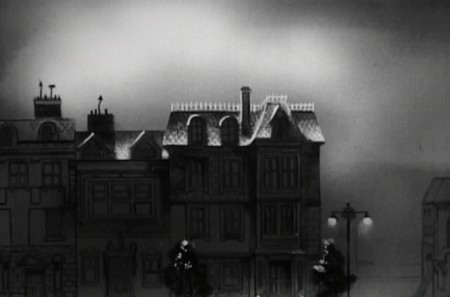 1
1

As we pan from left to right, the city builds up for the camera.
The bridge, on the far right, is the last structure to be constructed.
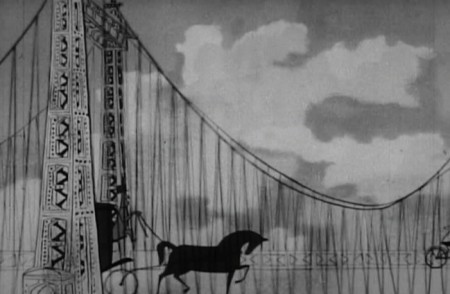 8
8
Cut in to the bridge as a horse drawn carriage enters . . .
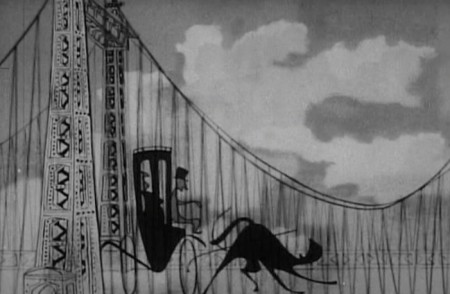 9
9
. . . and before our eyes , , ,
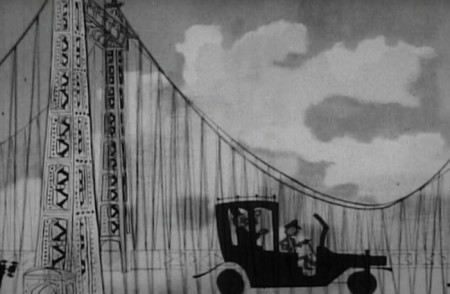 10
10
. . . turns into an automobile.
